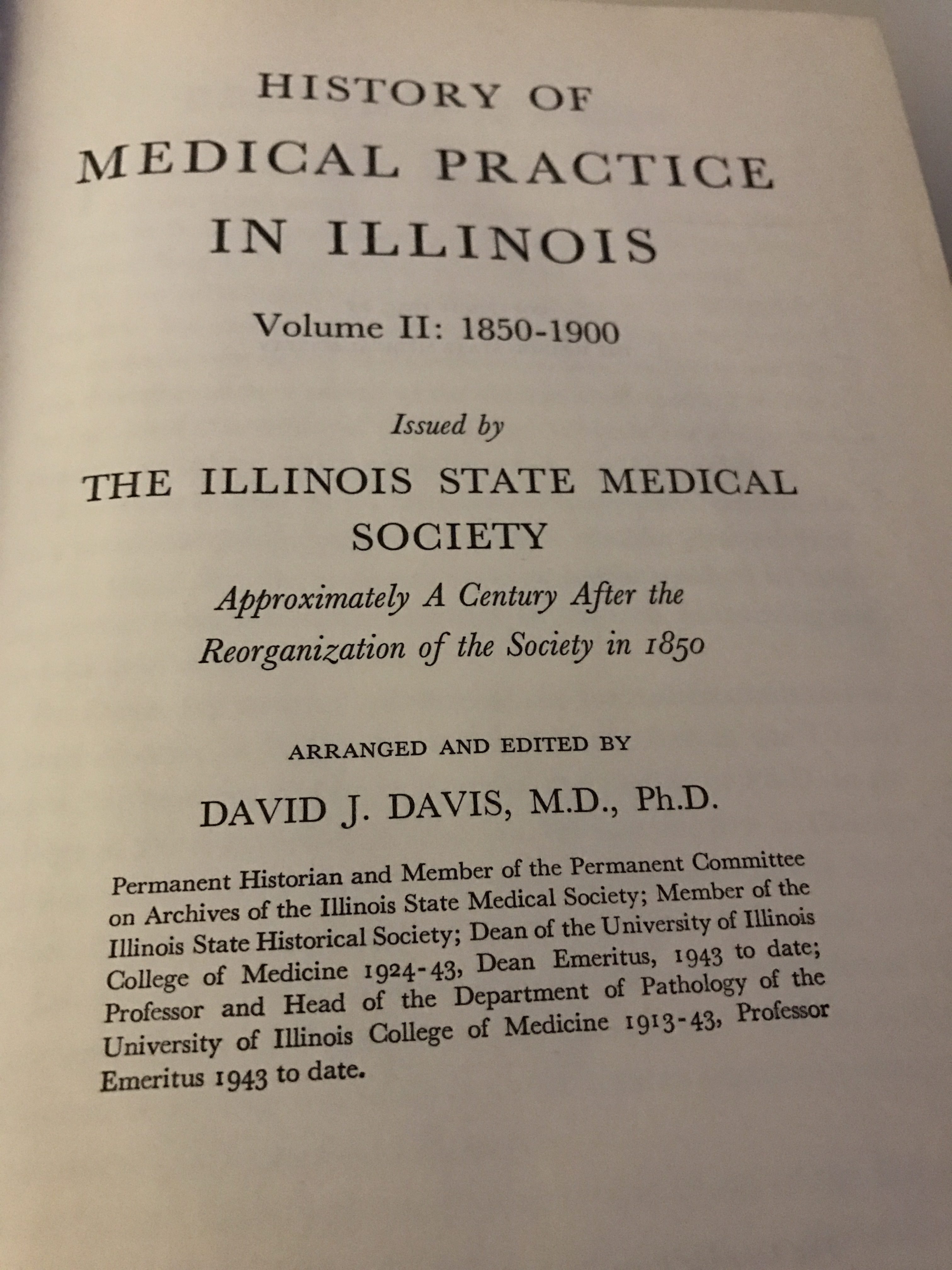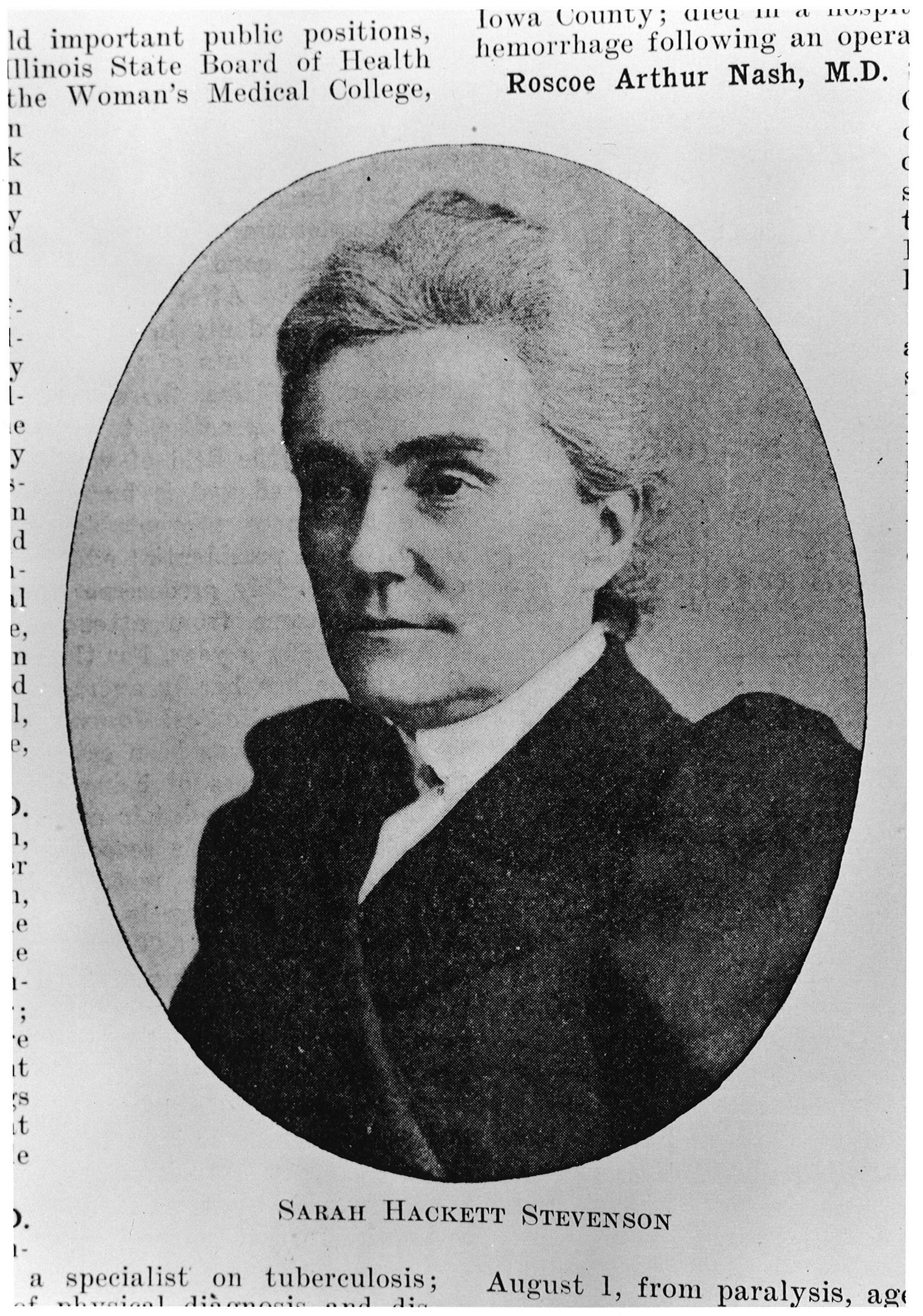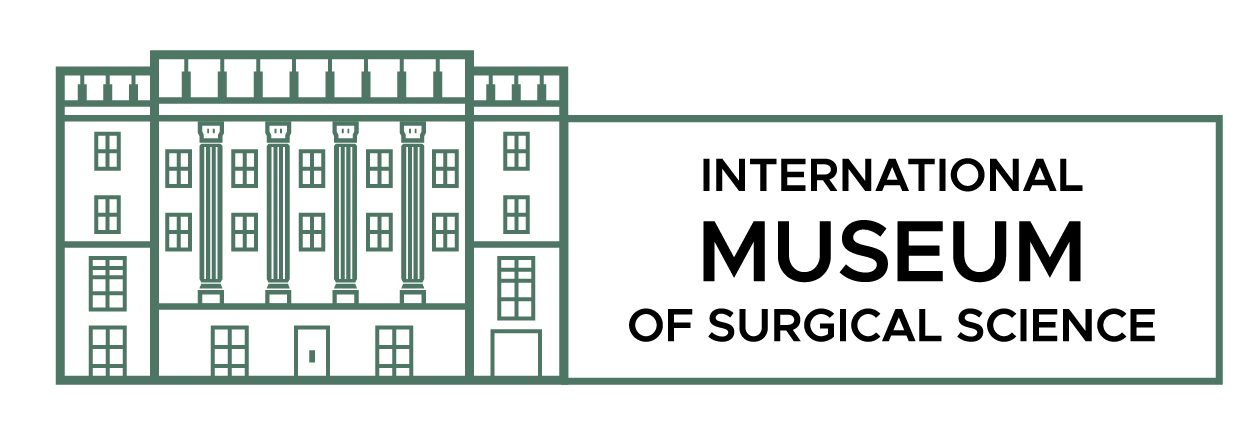Published by Carrie Olivia Adams.
In my earlier blog post on the search for Chicago’s first women doctors, I briefly introduced Dr. Sarah Hackett Stevenson, (1841–1909), a graduate of the Woman’s Hospital Medical College and the first female member of the American Medical College (AMA). As a preview for my upcoming artist talk on May 5th, I thought I’d explore the history of the College and Dr. Stevenson’s matriculation into the national medical community in greater detail.
In the mid-nineteenth century, organizations, in particular the AMA, sought to curb the proliferation of quacks and horse and buggy doctors who were taking advantage of the public with quick fix tonics that could be as toxic as they were ineffective. The process of codifying the qualifications for anyone who wanted to call themselves a doctor led to the overall professionalization of medicine. While this may be seen as a step that prohibited many from practicing medicine, it can also be argued that it was the professionalization of medicine that made it possible for women to become doctors at all. By creating an established set of educational requirements and licensing guidelines, a specific path was created for anyone who wanted to be a doctor–and some women saw this route and took it.
In order to continue to support the Chicago Hospital for Women and Children founded by Dr. Mary Harris Thompson in 1865 there needed to be educated staff, and in 1871, Dr. Thompson and Dr. William H. Byford established an affiliated medical school for women, the Women’s Hospital Medical College.

The History of Medical Practice in Illinois describes the first years of Dr. Thompson’s Medical College so:
“The first regular course of lectures was delivered in the parlors and dispensary of the hospital, and the dissecting room was a loft, reached by four flights of stairs, in an old building by the river. But to the enthusiasts this did not matter . . . . The school opened with 17 matriculants and the session was considered a real success.”
Among those early students was Sarah Hackett Stevenson, who graduated in 1874 from the college, after studying in London for a year with Darwin and Thomas Huxley.

A year later, in 1875, she was elected to the Chicago Medical Society and was a delegate to the state meeting. The History of Medical Practice in Illinois describes the scene as so:
“Jacksonville, IL, Steps of the Hospital for the Insane: Innumerable high silk hats are seen, and one woman with full sweeping skirts and a wee umbrella. Dr. Sarah H. Stevenson of Chicago had been elected to membership; perhaps it was she.”
The Illinois Medical Society, as a whole, was an unexpected champion of her work, and in the following year, 1876, they sent her as a delegate to the national meeting of the American Medical Association in Philadelphia, where she became the first woman member of the House of Delegates of the AMA.
This, as you can imagine, was not without controversy. Just a few years before, at the AMA Annual meeting in 1871, the address of AMA President Dr. Alfred Stille included this passage:
“Certain women seek to rival men in manly sports . . . and the strong-minded ape them in all things, even in dress. In doing so, they may command a sort of admiration such as all monstrous productions inspire, especially when they tend toward a higher type than their own.”
By the time that Dr. Stevenson arrives at the meeting as the first woman delegate a few years later, the proceedings present a still very charged scene, one with a lot of debate, and the Illinois Medical History specifically notes that “so much time was wasted on the Negro and the woman questions.”
The official minutes of the meeting record:
“As the name of Dr. Sarah Hackett Stevenson was called, Dr. Wm. Brodie, of Michigan, moved that the names of all female delegates be referred to the Judicial Council. This was, on motion, laid on the table”
But no action was taken. What’s interesting is that Dr. Stevenson made no attempt to hide her gender. You’ll notice here on the official Delegate roster from the meeting, the majority of doctor use initials for their first name, which she could have easily have done, but the choice to register her full, obviously gendered name, seems bold and deliberate.

In his history of the AMA, longtime Journal of the American Medical Association editor Morris Fishbein notes, perhaps in an attempt to paint the scene of that first meeting with Dr. Stevenson as peacefully as possible, describes it thusly: “Dr. Stevenson, perhaps with remarkable wisdom, must have sat peculiarly quiet throughout the session, since her name does not appear as a participant in the making of motions, the offering of resolutions, the discussion of any papers or the presentation of any contribution.”
Though she may have been quiet then, but she wasn’t quiet for long. Dr. Stevenson becomes one of the most vocal advocates both in Illinois and in the country for the teaching of medicine to men and women alongside each other, arguing that it seems counterproductive to teach them separately. Doctors of both sexes will treat patients of both sexes, and so there is no reason why they can’t learn together.
As Dr. Stevenson writes: “I hope that men and women will be educated in one institution–educated as physicians without any regard to the sex question at all. It seems to me, if we be physicians, that the first necessity is equality of opportunity, and that is all the woman physician asks.”
And in her essay, “Coeducation of the Sexes in Medicine” she argues: “Judging from the amount of gray matter in the brain of woman, we should say it was placed there to be used.”
And use it she does!
For more on the rise of women in medicine, I hope you’ll join me for my upcoming artist talks.
Carrie Olivia Adams is the Museum’s Spring 2017 Artist in Residence. She is the author of “Operating Theater” (Noctuary Press 2015), “Forty-One Jane Doe’s” (book and companion DVD, Ahsahta 2013), and “Intervening Absence” (Ahsahta 2009) as well as the chapbooks “Grapple” (above/ground press 2017), “Overture in the Key of F” (above/ground press 2013), and “A Useless Window” (Black Ocean 2006).

